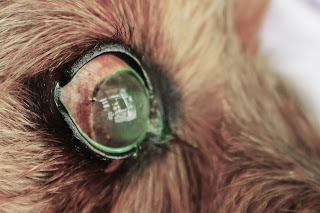15 Sep 2023.
PHOTOGRAPHY TIPS: Use TV at 1/1000 sec for moving bird.
The female Olive-backed Sunbird has yellow throat and eyebrows,
but the male flashes a blue iridescent throat. YCK Singapore. 15 Sep
2023, 5.42pm.�
Canon R5, TV, ISO 125, f/4.5, 1/1000 sec, 100mm.�
TO BUY PHOTO: www.shutterstock.com/g/toapayohvets
UPDATE:
https://2010vets.blogspot.com/2019/06/3338-nature-stories-oriental-garden.html
Evening walk at Casuarina Walk and the vicinity. I didn't
expect to see any birds as most landed properties do not get visited
by birds. But this house had a shrub producing numerous yellow bells
(Tecoma stans). A Carpenter Bee with blue thorax buzzed amongst the
flowers. I managed to take sharp photos of his back view. A sunbird
popped in and out of the shrub, sucking nectar from the flowers by
piercing the petals to access the nectar with her curved sharp beak.
"Come over to this side," a Myanmar maid carrying
a toddler said to me as I told her I could see only the back of the
sunbird. The slim short personable lady from Monywa, Sagaing
Division, located in Myanmar was a passerby who lived in this
residential enclave of semi-detaached houses. She had not been home
for 7 years. I got this good photo because of her advice.
-----------------
Another image of the sunbird
Image of a blue Carpenter Bee on 15 Sep 2023 on Tecoma stans (Yellow Bells) in Casuarina Walk.
15 Sep 2023.
PHOTOGRAPHY TIPS: Use TV at 1/1000 sec for moving bee.
YCK Singapore. 15 Sep 2023, 5.42pm.�
Canon R5, TV, ISO 320, f/4.5, 1/1000 sec, 105mm.�
#bluecarpenterbee
#singaporebees
#kongyuensing
#shutterstock.com/g/toapayohvets
TO BUY PHOTO: www.shutterstock.com/g/toapayohvets
UPDATE:
https://2010vets.blogspot.com/2019/06/3338-nature-stories-oriental-garden.html
Evening walk at Casuarina Walk and the vicinity. I didn't expect to see any birds as most landed properties do not get visited by birds. But this house had a shrub producing numerous yellow bells (Tecoma stans).
A Carpenter Bee with blue thorax buzzed amongst the flowers. I managed to take sharp photos of his back view.
A sunbird popped in and out of the shrub of Yellow Bells (Tecoma stans) outside a semi-detached house in Casuarina Walk.
-------------------------------------------
Sun Jun 9, 2019
Blue skies white clouds at 8.30 am when I went for exercise walk but drizzle at 10 am.
A brown bird flew past me and perched on a tree opposite the road. I leant my hand on a tree to steady my camera and got a clear view. 3 angry red ants bit me.
I did not expect the see the OGL (Oriental Garden Lizard) today as I was late. Usually I would be at the tree at 7.30 am to 8 am. He was absent.
But I saw the red-whiskered bulbul on a tree and clicked him. On hearing the clicks, he flew off. Later, near the OGL tree, he was up on a nearby tree where the Pink-necked green pigeon (PNGP) used to roost. I videoed him (Video).
On the OGL tree, large polka-dotted bird hid inside the branches but flew off after I took some images (image). In the nearby area, I saw the sunbird tweeting in another tree with orange flowers.
I saw sparrows, rock pigeons and mynahs but did not photograph them. I got a photo of a spotted pigeon sunning up a tree (image).
Later, a smaller OGL crossed my path as I walked past the bushes in this area where I had seen one OGL on a tree around 2 weeks ago. (Images taken). So I was hopeful. But he sprinted to hide inside the bush and I could not locate him. I walked elsewhere to the end of the road and came back. There he was lower down a tree trunk and hard to spot. Took images. He sprinted up the tree after a while. Got another image.
Dark clouds. drizzle. I went home. .
So, this was a fruitful Sunday in the sense that there were the reptile and the birds seen by me. .
Tue Jun 11, 2019 9 am Overcast day
The 2nd tree lizard was very high up in the same tree. I had thought he had disappeared as no lizards appeared in the same tree for a long time as there are many trees. There he was. Silhoueletted. I took an image.
I looked for the 2nd tree lizard. None was seen on the tree. There was a sudden movement in the grass patch below. I went behind the tree and spotted this lizard.
Wed Jun 12, 2019 9 am. Bright sunny day.
The first tree lizard was there looking downwards (image). He was watching me. I took photograph at a far distance as he would slid away if I ventured into his space.
I went to watch for the second tree lizard. None was seen. I went back to the first tree. The lizard was still in the same position facing downwards. I approached closer to around 10 feet. He did a split-second somersault and faced the upward direction (image).
Wed Jun 12, 2019 8.30am Bright sunny morning in the early part.




















